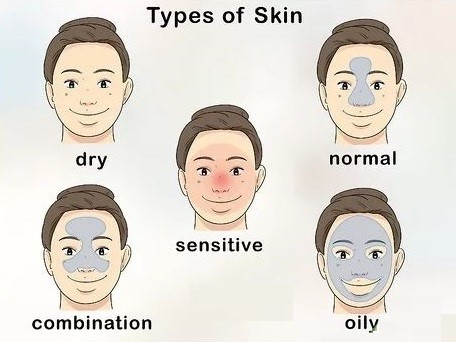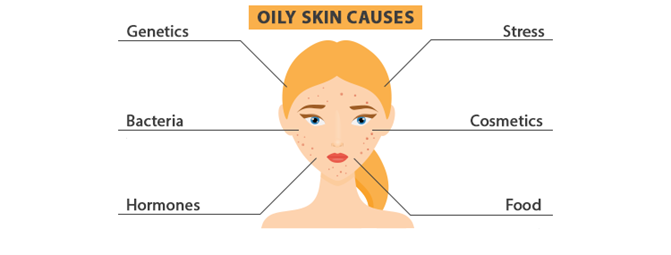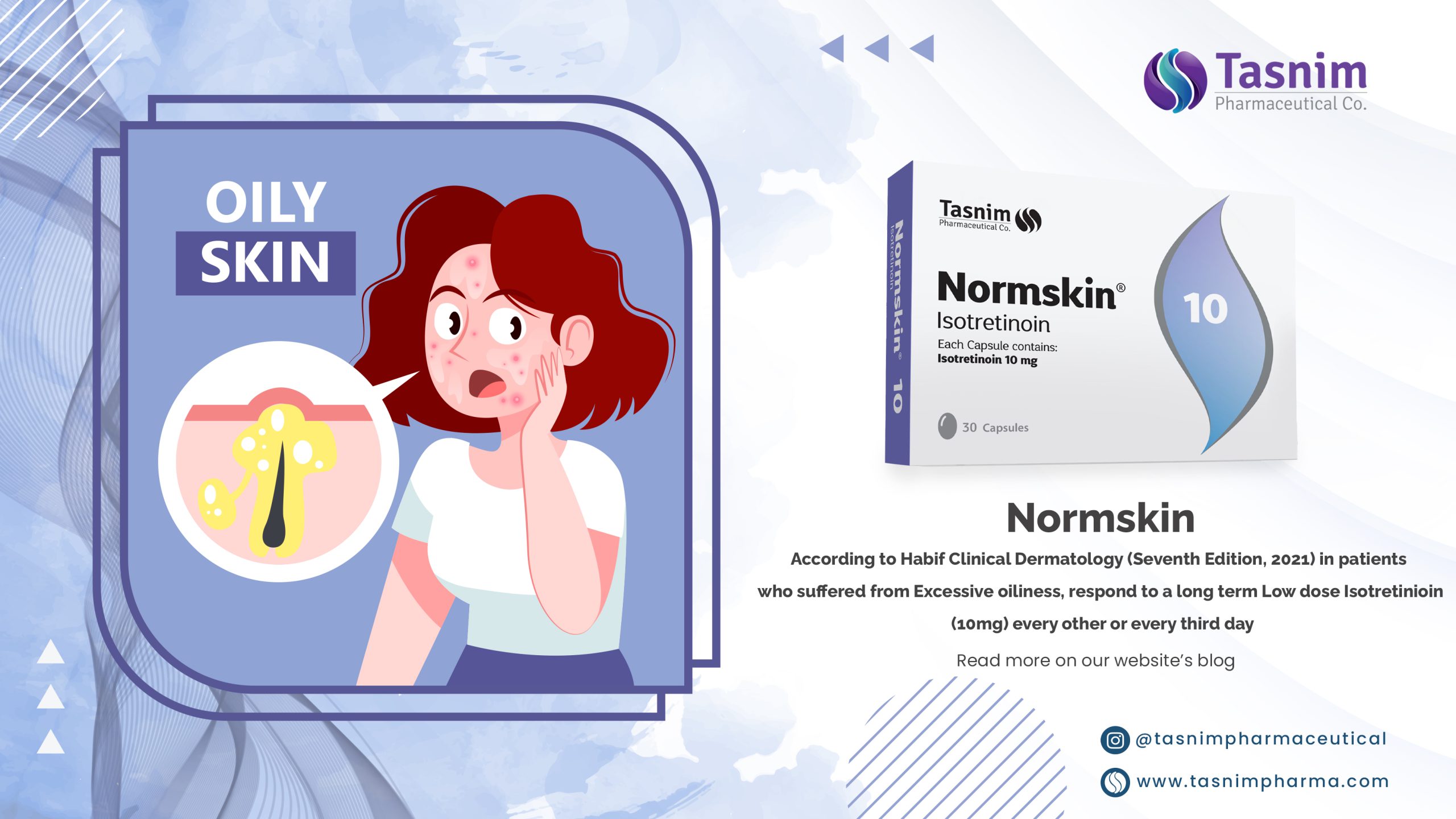One of the most common dermatology problems is oily skin in men & women. Among all type of skin, oily skin has some benefit, the oil preserves the skin, and people with oily skin have fewer wrinkles but this type of skin need more care, oily skin can clog pores and increase acne breakouts.

There many reason for oily skin including Stress, humidity, Cosmetics, dietary choices, Hormones, cleaning, and genetic influence.

There are some risk factors for Oily skin as shown below:
|
Risk factors for oily skin |
|
Male sex |
|
Spring & summer season |
|
Humid climate |
|
Premenopausal women during the ovulation |
|
Conditions with elevated androgens (i.e., congenital adrenal hyperplasia, androgen-secreting tumors of the ovaries or adrenal glands) |
Treatment of oily skin:
According to some articles and guidelines, topical and systemic therapy may be helpful for treating oily skin.
Base on the Habif Clinical Dermatology (seventh edition, 2021); Excessive oiliness is disturbing and can last for years. Antibiotics and topical therapy may provide some relief, but isotretinoin’s effect is dramatic. Relief may last for months or years; some patients require a second or third course of treatment. Some patients respond to a long-term low-dose regimen such as 10 mg every other or every third day.
References:
-
Oily Skin: a review of treatment Options, DAWNIELLE C. ENDLY, DO, and RICHARD A. MILLER, DO, dr. endly is with advanced dermatology skin cancer and laser surgery center in aurora, colorado. dr. miller is with nova southeastern University/largo medical center, dermatology residency Program and Bay dermatology and cosmetic surgery in largo, Florida. JOURNAL OF CLINICAL AND AESTHETIC DERMATOLOGY august 2017 • volume 10 • number 8
-
Habif clinical Dermatology, (seventh edition), A Color Guide to Diagnosis and Therapy, James G.H. Dinulos, MD, 2021 Elsevier Inc. All rights reserved.
-
rosenfield rl, deplewski d, kentsis a, ciletti n. mechanisms of androgen induction of sebocyte Dermatology. 1998; 196:43–46.
-
Plewig g, kligman a. Acne and Rosacea. 3rd ed. springer; 2000:58–67.
-
kim By, choi Jw, Park kc, youn sw. sebum, acne, skin elasticity, and gender difference- which is themajor influencing factor for facial pores? Skin ResTechnol. 2013;19:e45–53.



